By Gam Nguyen, Mar 1, 2025
The four distinct seasons of Sapa affect the landscape and the activities of its people in many ways. Higher than Hanoi, both in terms of altitude and latitude, Sapa features its own micro-climate, one shared by other hill regions in the north like Ha Giang and Cao Bang.
The main hub of Sapa Town has come a long way since its use for military purposes by the French in 1922, with layers of Western and Vietnamese culture adding to that of the original ethnic minorities of the region. The hurricane of tourism has passed through Sapa in recent years and now a visit to its many golden rice paddies, sky-scraping mountains, rippling green hills and humble hill tribe villages is an essential part of Vietnam travels.
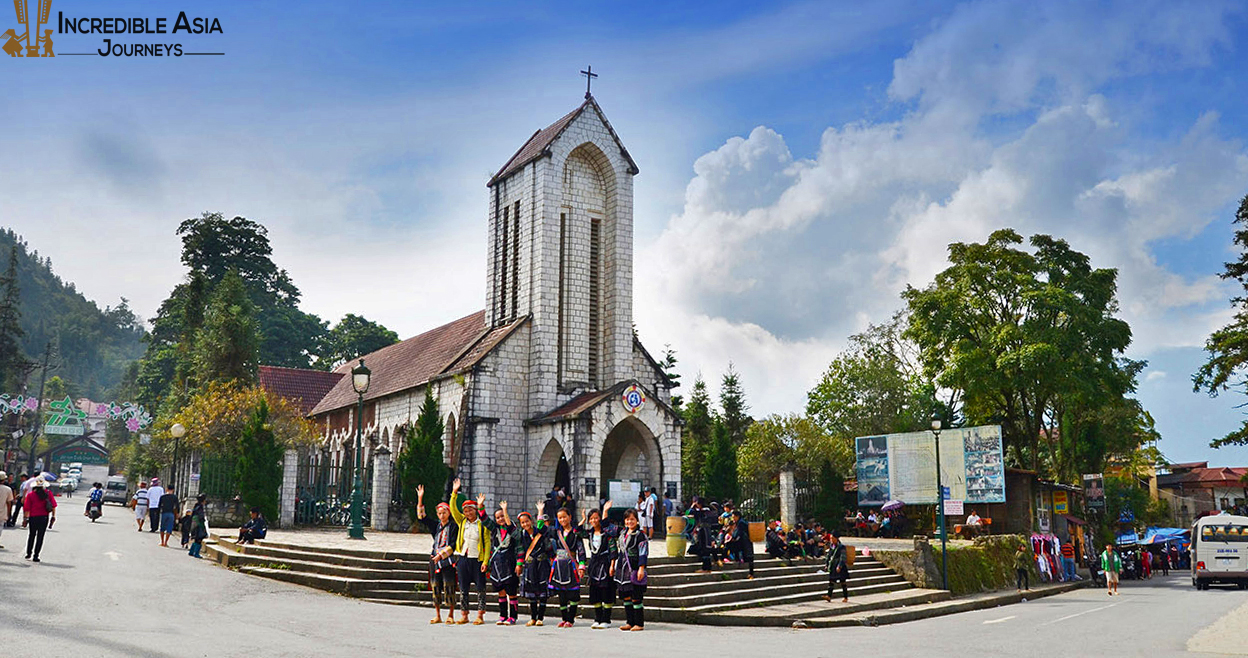
The Stone Church in Sapa
The best time to visit Sapa changes depending on the reason for your stay. While the distinct seasons make it easy to know when the Sapa weather will be less than optimal, the reasons to visit Sapa are numerous in amount and some are even enhanced by the colder and wetter weather that occurs at certain times. Sapa’s weather is in constant flux and its unpredictability often frustrates travellers to the region. Comprehensive guides are tough in this beautiful but volatile region, but here is our attempt at finding the best time to visit Sapa.
The Sapa scene in spring looks like something straight out of a storybook. Romance is in full flow as peach blossoms spring up between mid-February and mid-May, creating a splash of vivid pink to add to the brilliant blue sky and crisp green rice paddies of the Sapa palette. Spring is very much peak season in Sapa, so be prepared for higher prices and more tourists.
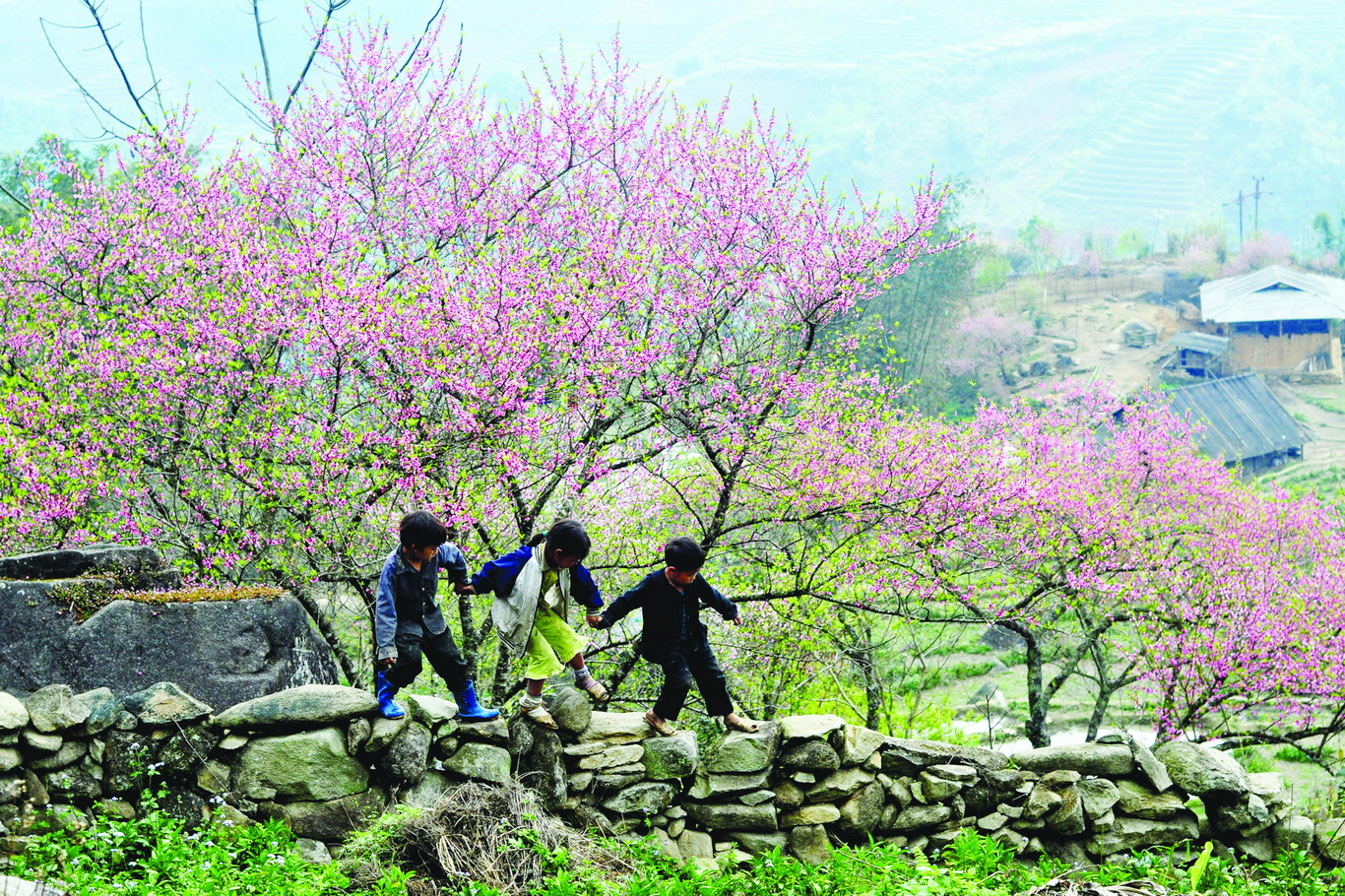
Sapa in Spring
If it is comfortable trekking you’re after, then there’s no better time to visit Sapa than spring. The temperature rises quite a bit over the months of March, April and May; averaging about 15°C (59°F) at the start but 20°C (68°F) by the end. Though naturally colder than most of the rest of the country, the heat of the sun is not so debilitating that you feel your energy drain just by standing under it, like you might during the same month in Hoi An or Ho Chi Minh City.
Morning drizzles during spring are not uncommon, but the clouds are really just testing the waters before the summer deluge. Heading out later is usually the key to staying dry, but the impulsiveness of the quickly congregating clouds will have other ideas. The difference between the start and end of spring is massive, with March producing about 120mm per month compared to the threefold increase by May, which produces 370mm.
The rolling mist that descends around Sapa essentially does so whenever it feels, often here and gone within the blink of an eye. The best chance for avoiding the fog is in its sunniest month, April, which boasts about 6 hours of sunshine per day and is the perfect month for any potential photographers visiting the region.
The beautiful spring weather brings the beautiful people of Sapa out in full force. Boisterous festivals are thrown after the start of the new lunar year, which falls either at the end of winter or the start of spring depending on the lunar calendar. The Gau Tao Festival, celebrated by the H’mong people, the most prominent minority tribe in the region, is initially a solemn religious affair before a few days of music, dancing and sport put everyone in a very festive mood.
As with spring throughout the world, the best time to visit Sapa for its gorgeous flower blossoms is between February and April. Pink cherry blossoms, white pear flowers, purple plum flowers and the yellow of small shrubs become ubiquitous, turning Sapa into a vast, colourful wonderland and giving photographers many amazing backdrops to shoot some of their best work.
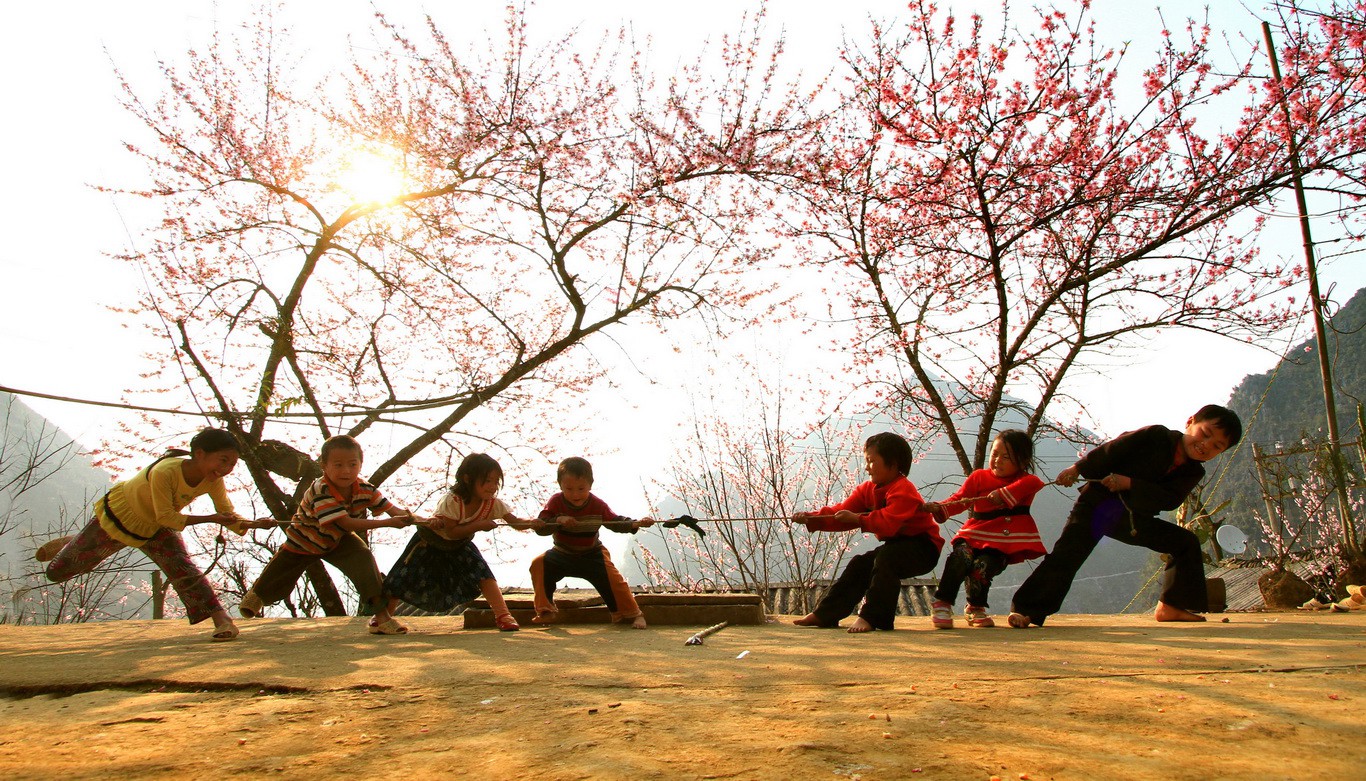
Children in Sapa
Once the clouds have made their vague threats in April and early May, they are ready for the downpour of summer. This is easily the wettest season in Sapa, but rains tend to wash away the debris of foreign tourism, replaced by domestic tourism pretty much exclusively in Sapa Town and other hubs. A visit between June and September might be a brave endeavour, but it’s likely to be a quiet one out amongst the remote paddies.
Naturally the hottest season in the region, heat joins the other components of Sapa’s weather in going full force. Averages are still a very comfortable 21°C (70°F), but highs of around 26°C (79°F) can feel a little draining if experienced for multiple hours while trekking in the sun. Nights are warm, however, which lends a lovely twilight atmosphere throughout the region.
If you haven’t invested in a fashionable Vietnamese poncho during your summer visit, you might want to consider getting a fairly substantial one. 80% of all of Sapa’s rain falls within summer, with July and August producing almost 500mm of rainfall each. As miserable as this sounds, the warm weather and the much quieter trekking trails actually lend Sapa a calm, contemplative vibe, one that’s hard to find in busier areas around the country.
The vast clouds that devour hilltop villages and the peaks of mountains are a fairly common sight during summer in Sapa. However, the mist rolls quickly in the region, and a bit of patience can be rewarded with rapidly cleared skies and the opportunity to get breathtaking pictures of the retreating fog as it unveils rice paddies and whole villages in its wake. If you’re into photography, there’s really no better time to visit Sapa.

Sapa in Summer
The swirling kaleidoscope of colours that Sapa’s rice paddies progress through each year reaches their greenest stage in summer. The reflective blue of the water that is common in the rice paddies during spring is replaced with young rice seed and picture-perfect layers of lush green descending all the way down to the valley floor.
The Summer Tourism Festival is a planned event to stir up tourism in this quiet season. Starting quite early, in May, and lasting until the end of June before the torrential rain really kicks in, the Summer Festival in the square of Sapa Town gathers various traditions of far-reaching hill tribes in Sapa and displays them together. This is a great way to absorb some of the traditions of the hill tribes that you wouldn’t usually have time to go and see.
Check out our Best Tours to visit Sapa:
Autumn in Sapa has no need for festivals to drum up tourism, it simply lets its natural beauty speak for itself. The period between mid-September and early December is one for the romantics, as vast seas of golden rice stretch out in every direction and the sky opens up to a deep blue and a fervent sun; creating, in many peoples’ eyes, the perfect conditions and the best time to visit Sapa.
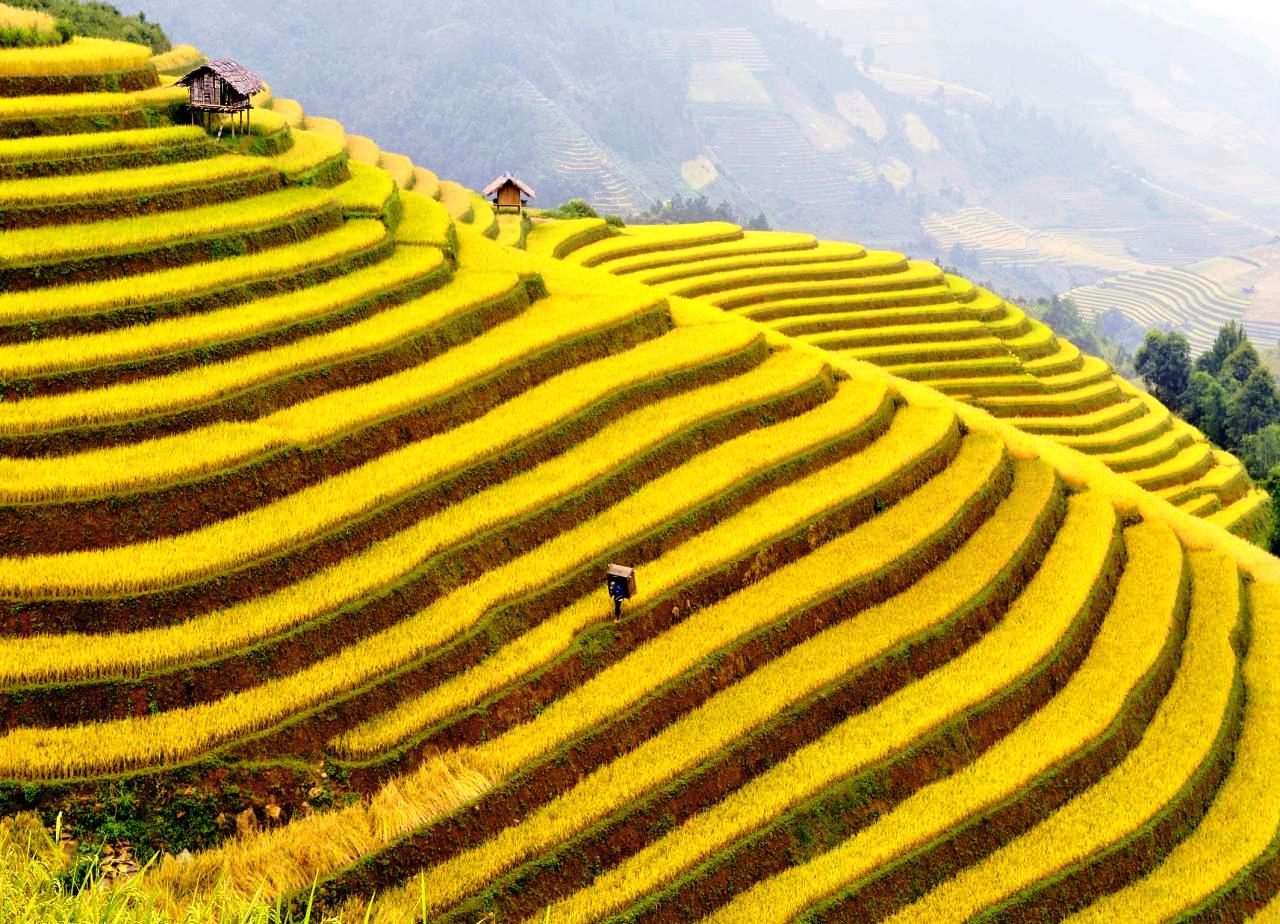
Rice fields in Sapa
From the heat of summer, the temperature falls from about 20°C (68°F) through the end of September to 14°C (57°F) at the start of December. This can cause a few chilly shivers when the wind picks up on the trek, but really it is the ideal trekking temperature.
The later on in autumn that you decide to head to Sapa, the more chance you have of avoiding the rain. From about 320mm in September to barely 40mm in December, the anger of the summer clouds subsides and leaves Sapa in a calm, if occasionally wet, state of being. Sapa’s weather in autumn is just as unpredictable as it is in spring, so be ready with that poncho in case you see the clouds moving swiftly in.
Views of the rice harvest are the prime reason to come to Sapa during autumn and this is why peak season prices and traffic are in full flow around Sapa Town. Getting out of Sapa Town and into nature, with its long, clear days with 4 or 5 hours of sunshine is a much better alternative. The sun really accentuates the gold of the rice and also provides some almost biblical scenery courtesy of the shadows it casts with occasional clouds.
At this time of the year, Sapa gets back to its roots. There is no song-and-dance, no spectacle for tourists, just local people going about their local work in the fields, on the mountains or at the house. The idyllic scenes of the fields being tilled are quintessential Asia and trekking is the best way to see it all happen. Many Sapa trekking tours operate around this time, but the routes are rarely crowded due to the vast area that Sapa covers, meaning tourists have spread thinly around.
Towards the middle of the season is absolutely the best time to visit Sapa for camping, an activity that ideally requires no rain, moderate temperatures and clear visibility, all of which are present during autumn.
Sapa in winter conjures the most magical images for Vietnamese people about their homeland. The region is sometimes covered with a blanket of snow during its short winter, a complete novelty for the Vietnamese, many of whom have neither seen nor touched snow directly before. Visits to Sapa during winter are essentially solely for this, as snow never fails to get national news coverage and drum up big interest throughout the country.
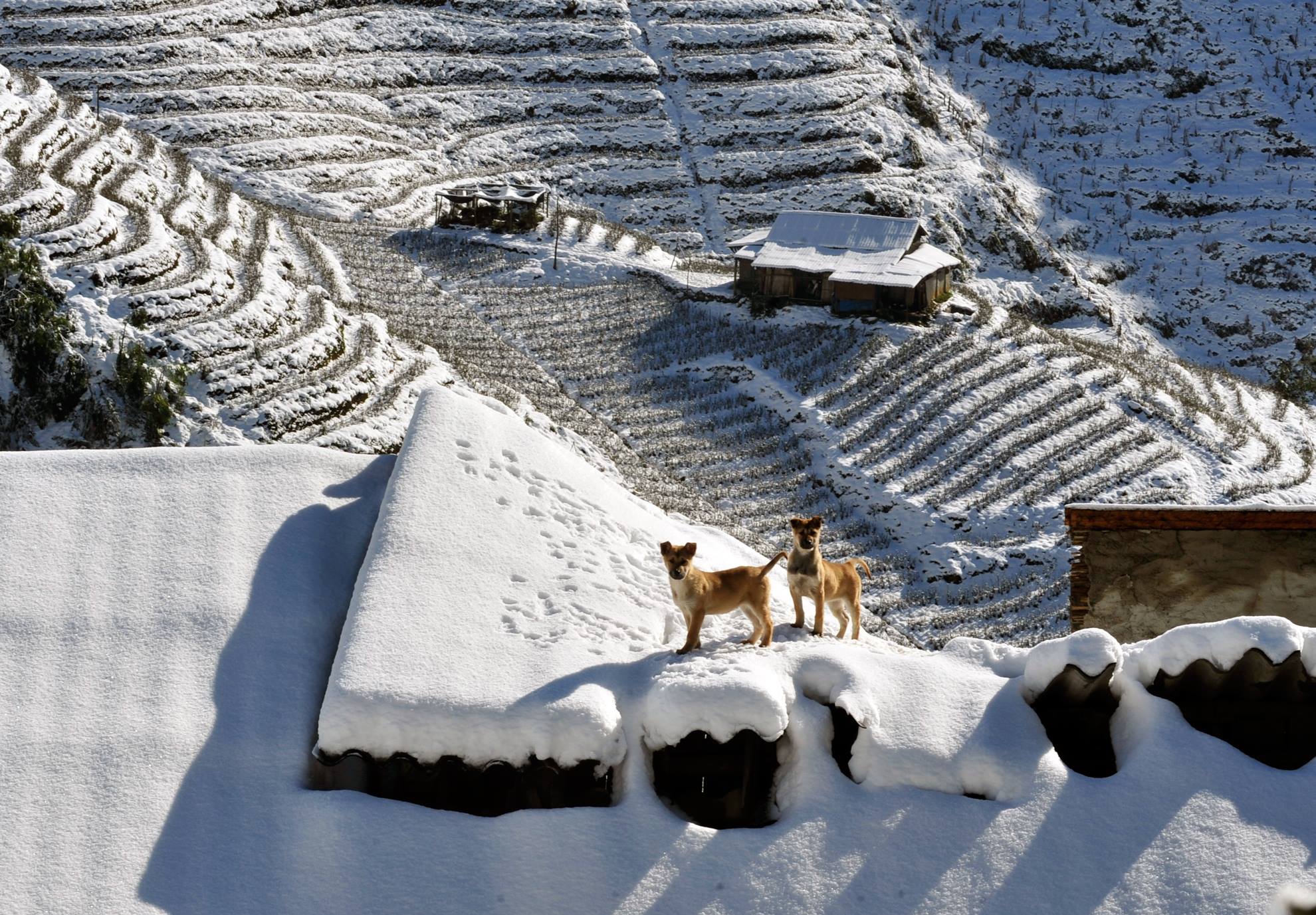
Winter in Sapa
Usual lows of about 6 or 7°C (45°F) at this time are not uncommon, every so often dipping even lower during the night. With averages just about scraping double digits at 10 and 11°C (52°F), it’s a fair assessment to say that it’s pretty cold in Sapa in winter. The upshot, however, is that this puts a lot of tourists off, giving you much more freedom to frolic around the white rice paddies.
Snowfall in Sapa, no matter how romantic the image, is still a rare phenomenon. It is cold, drizzly rain that usually trickles languidly across the province, making treks pretty uncomfortable and camping experience a miserable experience. Though the averages of just about 40mm per month suggest a generally dry time, these rains often come in the form of a persistent sprinkle rather than in one torrent like the other months do, meaning they can last for hours.
All that light sprinkling requires lots of grey clouds to carry it out. Towards the end of autumn, dark clouds like to shift over the Sapa landscape and settle in for the long haul. Just about 3 or 4 hours of sunlight a day over December and January means that Sapa becomes quite a dark place, with the fog sometimes settling about 15 feet from your face.
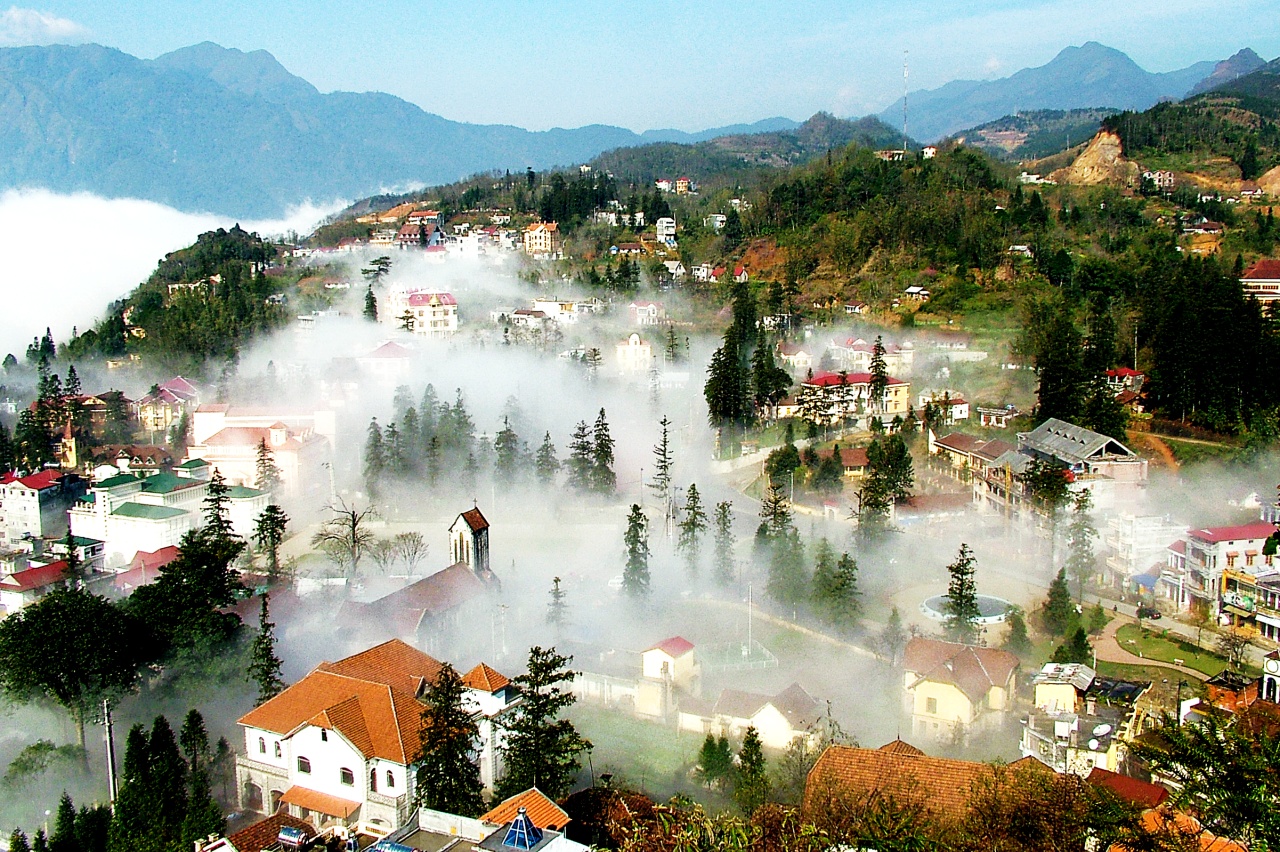
Sapa is covered with fog
After such a dour assessment of Sapa in winter, you’ve probably written it off already. Honestly, you’d be right to do so, but if it’s the only time that you can go and you’re determined to make it work, then there are a few events towards the end of the season that you can try to catch to liven things up.
Nowadays, due to global warming, the orchid and peach blossom starts towards the back end of winter and spectacular new blooms can be seen as early as January around Fansipan Mountain. If you’re lucky to catch this at the same time as the snow, then you’re in for a real photographic treat.
The Giay hill tribe perform a ceremony called Roong Pooc in January to wish for a good harvest in the upcoming year. This comes in the form of a shuttlecock-throwing game followed by general festivities. Roong Pooc became so popular in the past that many other hill tribes around the region made their own versions, giving you many opportunities to see authentic hill tribe culture in Sapa.
Now, if you eager to visit Sapa, what you're waiting for? Don't hesitate to contact Incredible Asia Journeys now!